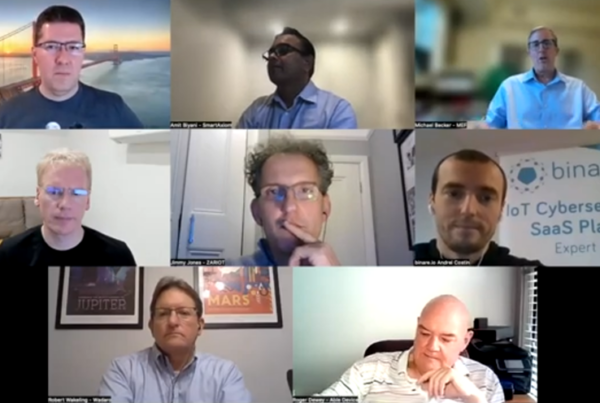MEF Advisor Andrew Parkin-White examines the current thinking on connectivity for autonomous cars and vehicles, and explores why the delays in progress now might benefit the industry in the long term.
Autonomous vehicles will feature strongly in future global transportation trends. Regulators were promising a new standard for vehicle to vehicle connectivity for mid 2019, but now on both sides of the Atlantic there are no clear decisions on the critical Internet-of-Cars network choice. However, a delay might be a good thing in reality if it provides for a more flexible standard to emerge.

The Internet of Cars – the standard wars
The connected car is preparing for a new battle regarding connectivity standards. The new ‘autonomous’ or ‘driver assisted’ vehicle will need connectivity to share information with nearby cars/busses/trucks etc and also with remote Internet services (e.g. weather, traffic information). The details regarding this connectivity were supposed to be clarified in the USA and EU in the last couple of months. Given the time to market for the necessary silicon components, a clear choice today would give full support for productions of chips by the end of 2021.
Missing the deadline will reduce the mass market opportunities for the ‘assisted security solutions’ that car manufacturers and regulators were aiming for 2022. Car manufacturers and regulators are still avoiding promising a fully autonomous car, but this would also be an important enabler for the introduction of self-driving cars.
Instead we are effectively at a standstill. Mobile network operators are keen to keep the Internet of Cars delivered via their networks. However, until recently the car industry seemed lukewarm to the existing (4G) and specifically to the future technologies (5G) preferring instead car to car connectivity using V2V (Vehicle to Vehicle) communication, an extension of good-old WiFi. In this situation of uncertainty, we would support the view that Europe and USA would do well to adopt a tech-neutral approach, and let more development in the market and connected applications before mandating a single approach once the technology could be more mature. The choice of standards will provide backward compatibility: waiting would not be that bad overall.
Regulation for supporting mass market roll out.
In both the EU and the USA the standardisation seems to have been set back while the number of new connected cars steadily grows. The industry is still largely waiting for signals from regulators – and this might slow development. The number of “Connected Cars” produced is already significant: 20 million cars with inbuilt wireless connection were produced in 2017 according to Gartner, a number destined to triple to 60 million by 2020 according to the analyst house.
The industry should consider the realistic match of applications and network maturity. 5G and even 4G coverage are not capable to delivering carpet coverage of roads and tunnels. But the richness of IoT connectivity will only be obtained by linking to the full Internet not just to nearby cars – and only telecom infrastructure can reliably deliver that.“
In the US, the early lead in approaching regulation of the National Highway Traffic Safety Administration (NHTSA) seemed to have faded by April 2019, with the a decision postponed. However, a similar situation followed in July 2019 in the EU.
The EU commission proposed to regulate the standard by backing WiFi in March 2019. However, the divisions between countries quickly brought the discussion to a standstill in June, with the transport commissioner Violeta Bulc admitting alternative agreements needed to be reviewed with EU country members. A rethink is now expected (possibly away from V2V towards C-V2X). The telecom community felt relieved.
A clear direction for the industry was expected to be apparent for 2019, to allow a two-year introduction plan of semiconductors for first shipments in 2021. This has now shifted to 2022 or later.
The choice among two standards
A word of warning, we should get used to a new set of network acronyms. The IEEE 802.11p is an approved amendment to the WiFi standard, referred to as WAVE (Wireless Access in Vehicular Environments). In the USA, the NHTSA was originally expected to release the Dedicated Short Range Communications (DSRC) V2V based on WAVE. The FCC (Federal Communication Commission) allocated 75 MHz of spectrum (5.85-5.925 GHz) for DSRC; the bandwidth could provide a throughput of 3-27 Mb/s, within a range of 300 meters. The technology is mature, as it is based on the well established WiFi structure.
The focus here is to share information quickly between one car and another – not Inter’net’ but intra-‘car’. The standard would provide for each car to broadcast safety information messages to other cars locally (e.g. location, speed, direction, braking). However, now the US road regulator is also reviewing cellular based version of the V2V standard. The C-V2X (Cellular V2X) is a more recent, 3GPP-defined technology, roughly based on the 4G/LTE technologies, with an evolutionary path towards 5G. It is important to notice that the X in the standard points out that the service is an hybrid providing both support to V2V technology and cellular networks. However, practical questions on backward interoperability with early V2V equipped vehicles remains for the most recent V2X version. More time should be given for V2X to stabilise, but car manufactures could today start deploying and testing V2V platforms in volumes.
The car manufacturers are split
The car makers are also showing some divisions. Toyota and GM are already selling cars with V2X technology installed in Japan and North America. Volkswagen will follow later in 2019 in Europe. However, the Chinese manufacturer Geely and Ford have mentioned plans to use C-V2X in their new vehicles by 2021 and 2022. Until the emergence of C-V2X a few years ago, most of the industry and regulators seemed to be behind DSRC. It was Ford’s opening to C-V2X in January that broke the American manufacturer support to the WiFi based solution.
The way forward
The industry should consider the realistic match of applications and network maturity. 5G and even 4G coverage are not capable to delivering carpet coverage of roads and tunnels. But the richness of IoT connectivity will only be obtained by linking to the full Internet not just to nearby cars – and only telecom infrastructure can reliably deliver that. It looks to us that the two solutions should be seen as largely complementary. The war of standards should instead be a phased testing and deployment phase and an opportunity for a deep dive on applications requirements, and experimentations. Backward compatibility between the two choices makes the path for early V2V deployments and then mandated V2X regulation possible and preferable.





